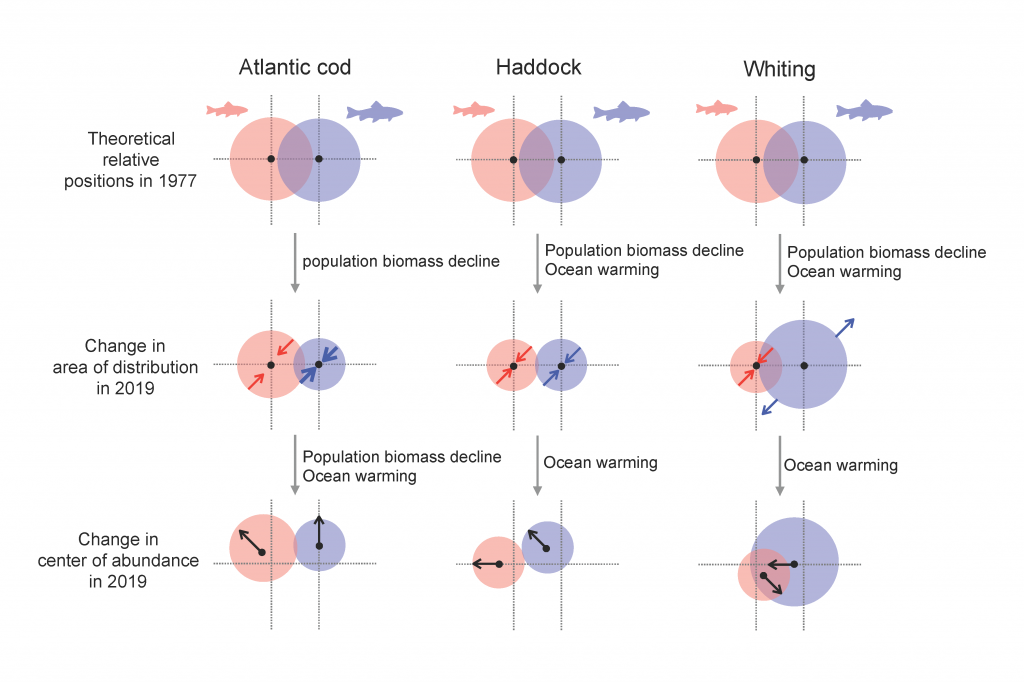Mechanisms of spatial segregation between body size groups within fish populations under environmental change
Hsiao-Hang Tao and Chih-hao Hsieh
The research team led by Dr Hsiao-Hang Tao and Professor Chih-hao Hsieh from the Institute of Oceanography, National Taiwan University developed a novel analytical framework to investigate within-population spatial dynamics, and applied this method to three ecologically and economically-important fish populations. The team analyzed how ocean warming and biomass declined were associated with the changes in within-population spatial dynamics. The results are published in an important scientific journal Ecography.
How spatial distribution of fish population changes with environmental pressure is an important research topic. While most of the earlier works focused on spatial structure at the level of population, spatial dynamics between groups of different body size (body size groups), that fundamentally shapes the spatial structure of a population, has been neglected. This work proposed a novel analytical framework, and applied the method on three fish populations: Atlantic cod (Gadus morhua), haddock (Melanogrammus aeglefinus), and whiting (Merlangius merlangius) over 43 years. This study found that all three populations exhibited strong declines in the overlapped area between body size groups over time. These declines were either due to (1) different magnitudes of contraction of the distribution areas of body size groups; and/or (2) different speeds and directions of spatial shift among various body size groups, both increasing spatial segregation within populations. These patterns were either associated with ocean warming, and/or declining population biomass. Increasing spatial segregation between size groups of a population likely results in complex ecological consequences.
This analytical framework can be applied to populations at various terrestrial and aquatic ecosystems globally, to identify vulnerable populations under environmental stress. This approach also allows us to uncover the mechanisms of spatial segregation within population, which have profound consequence in demographic connectivity and population stability
Reference:
Tao, H. H., C. W. Chang, and C. H. Hsieh (2023) Spatial segregation between length groups within fish populations under warming and population size decline. Ecography. DOI: 10.1111/ecog.06730
Conceptual diagram illustrating changes in overlapped area between body size groups within populations in response to ocean warming and population biomass decline. Circle represents the theoretical area of distribution of smaller (red) or larger groups (blue) within each population in a two-dimensional space. Black dots indicate centers of abundances. The direction of arrow in red or blue indicates expansion (outward) or contraction (inward) of the area of distribution for lthe arge or small group, respectively, and the thickness of arrow indicates the magnitude of change. The black arrow indicates the direction of shift in the center of abundance.











